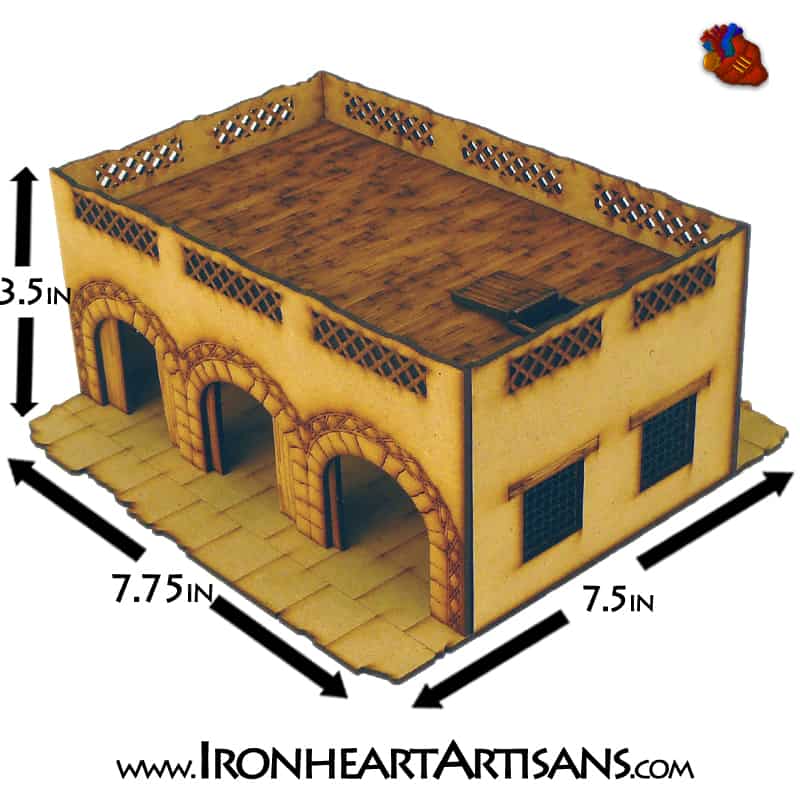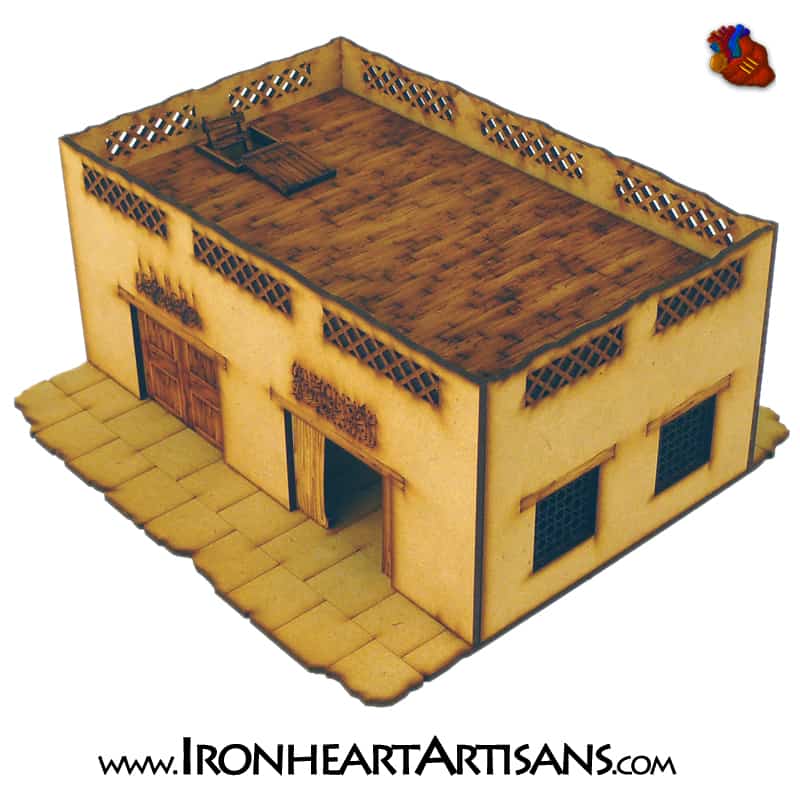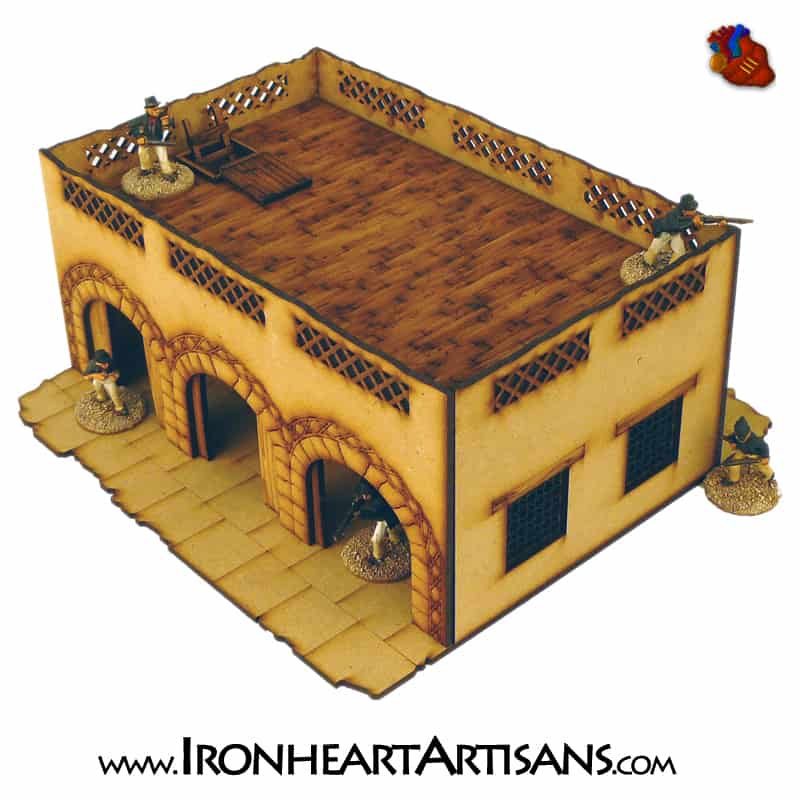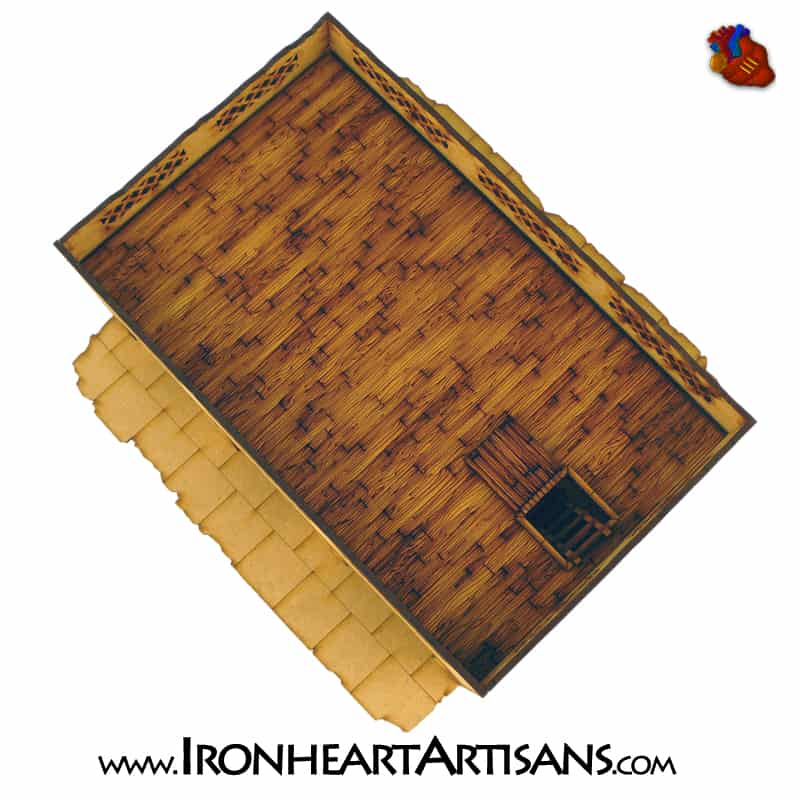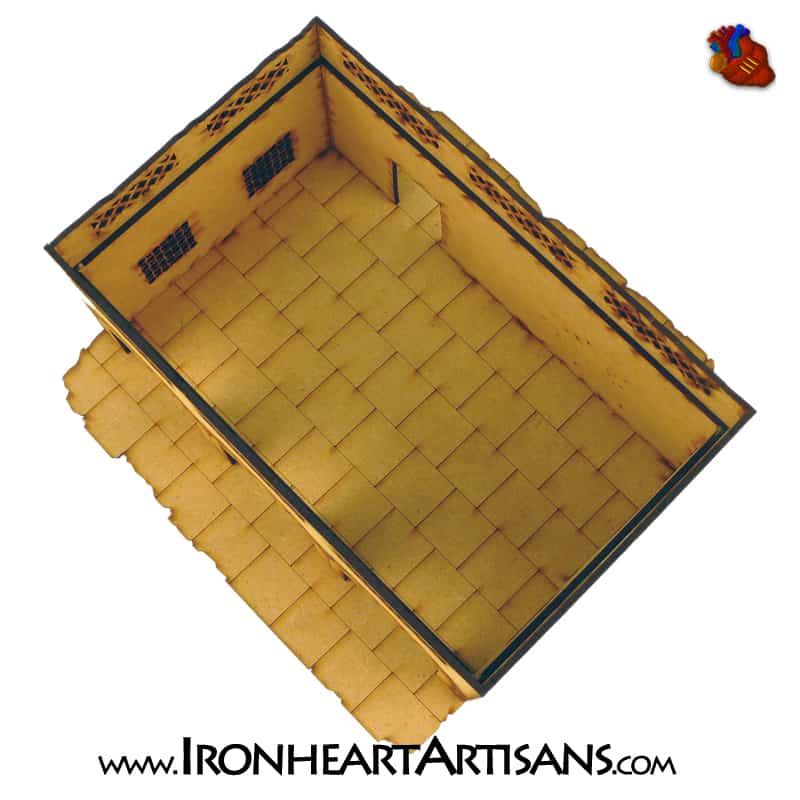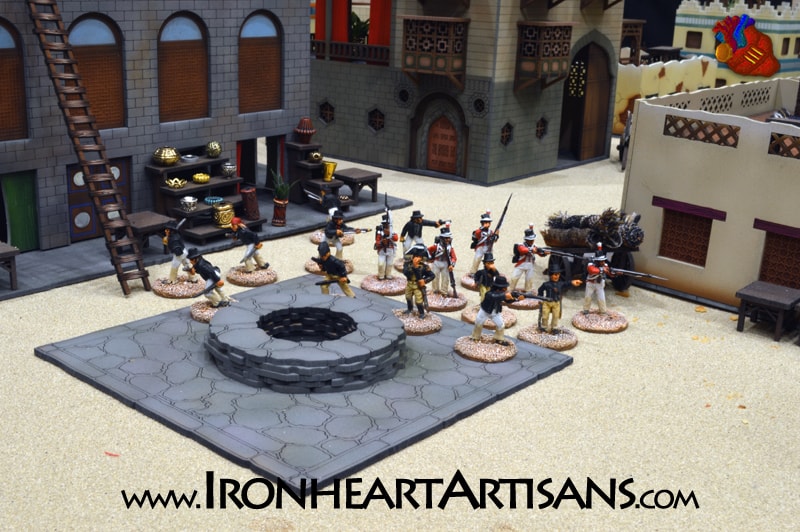Description
Misir Carsisi Market 28mm scale North African terrain is a small spice market will fit in down the street from your run down hostel or in the same neighborhood as some of the more ornate buildings in this collection. It is based on first hand reference pictures taken in Egypt and artwork through out history. This dwelling has been designed to try to bring as much accuracy as possible to your historical game table. The violence that will take place as your 28mm toy soldiers will be epic, for “the Spice must flow”
The laser etched detail is such that light gradients of thinned paint over primed surfaces are almost all that is needed to bring this terrain kit to life. Designed to be painted before assembly it will be a snap to tape off different sections, airbrush or spray can paint and assemble to end up with a above average looking building. That said going the extra mile on the detail work on the door arches will make it pop out!
The main building itself measures about 7.75in x 7.5in and stands 3.5in tall with the roof access building.
All international orders will be emailed a quote for exact shipping cost that will be added to our standard shipping charge as this a larger than our standard.
This kit is made in the USA by Ironheart Artisans from laser cut 2.5mm MDF and is a multi-part kit that will require assembly. The parts come completely cut and are NOT attached to a sheet that need to be punched out.
The painted example pictured is a prototype with certain differences from the model being sold. The unpainted kit shown is exactly what is included and how it is cut, we have made many improvements since the prototype.
Miniatures shown for scale only and painted by Robert Chandler, heads by Brigade Games and bodies from Perry Miniatures.
Painted kit by Robert Chandler and Dave Taylor.
Full table shots are for scale reference only and to give you a idea of what is possible with our north african terrain range.
For more reference to this type of architecture
http://islamic-arts.org/2012/cairos-islamic-architecture-7th-to-18th-centuries/
